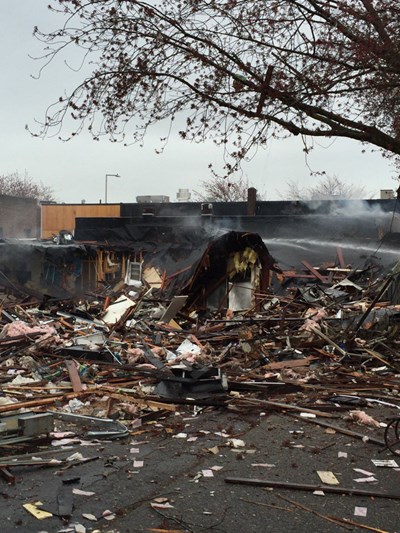
Not this time.
Before PSE could arrive on scene, the building exploded, injuring Seattle Fire Chiefs Local 2898 member Tamalyn Nigretto and eight Local 27 fire fighters.
Nigretto had been an instructor and participant in the IAFF Fire Ground Survival Training which is focused instruction on calling and surviving a mayday. The training encourages fire fighters to call maydays earlier than previous trainings may have instructed to ensure help arrives when it’s needed.
“Having had that training, I knew I needed to call that mayday as soon as the blast occurred,” says Nigretto. “The level of devastation was immediately apparent and I was concerned about the survival of my fellow fire fighters. So for the first time in my 29-year career, I called a mayday.”
“This is the perfect example of why Fire Ground Survival training is so important,” says Alan Cox, president Seattle Fire Chiefs Local 2898. “Despite suffering an injury of her own (a concussion), Nigretto was able to execute an effective mayday because she had practiced the scenario in her training.”
Her clear mayday resulted in a full response to the scene. None of the fire fighters left the scene with life-threatening injuries.
“Our members know it is important to treat all of these incidents as potentially hazardous situations,” says Kenny Stuart, president of Local 27. “For this incident, our members followed their training and that kept everyone safe.”
Funded by the IAFF and the Department of Homeland Security’s Assistance to Firefighters (FIRE Act) grant program, the International is able to offer this life-saving training to members. Seattle Fire Chiefs Local 2898 and Seattle Local 27 received their training in March 2015.
Fire service personal are frequently trained to put out fires and respond to other disasters, but the area that is consistently neglected during these training drills is how to survive a mayday-type situation, such as being in close proximity to an explosion or being trapped.
There is no way to predict when even the most routine emergency response situations will turn into a life-threatening situation. But IAFF members can increase their chances of survival by taking advantage of this training.



